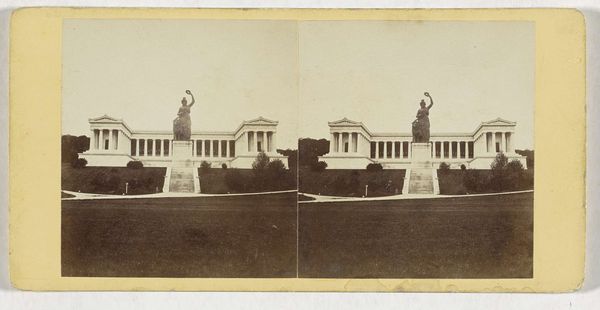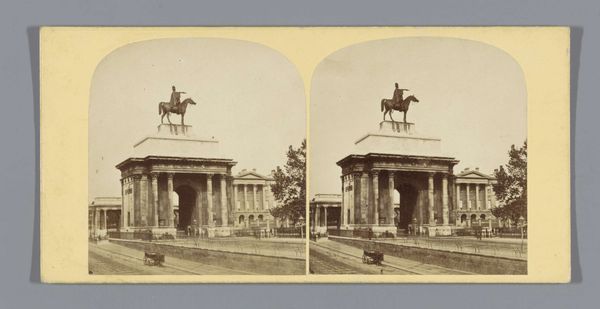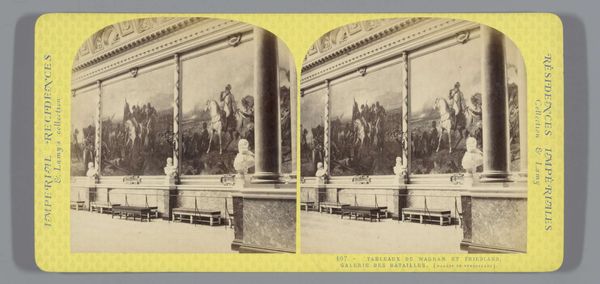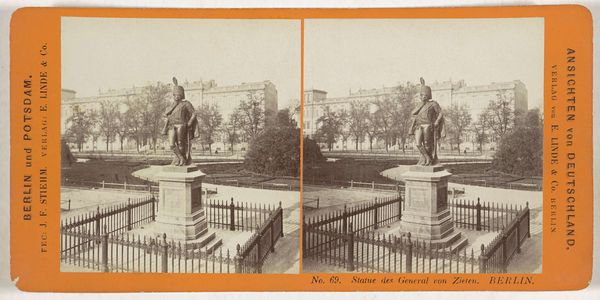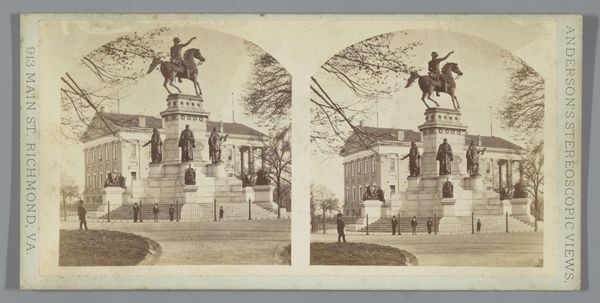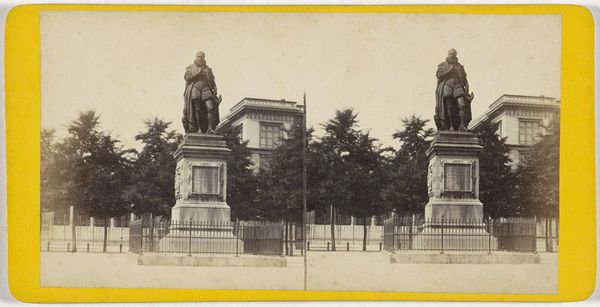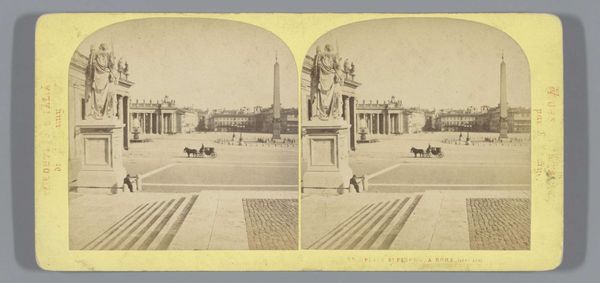
Dimensions: height 86 mm, width 175 mm
Copyright: Rijks Museum: Open Domain
Curator: This photograph by Johann Friedrich Stiehm, dating from around 1868 to 1900, presents a side view of the Bavaria statue in Munich. It’s a fascinating artifact, showing both neoclassical artistic influence and early photographic techniques. Editor: There’s a solemn sort of majesty to it, isn't there? A quiet strength radiating from that figure, almost dreamlike because of the sepia tones. And the lion! Always loved the stoic lion... what is its symbolic load here? Curator: Well, Bavaria herself, of course, personifies the strength and spirit of the region. The statue’s construction—its scale, the material choices—it all speaks to Bavaria’s ambitions to assert a strong regional identity within a unified Germany. The print allows wider distribution for political and cultural impact, essentially promoting regional strength through consumption and circulation. Editor: I find the photographic process itself compelling. The light, the stillness… It feels almost like capturing a ghost – a moment of national pride suspended in time. Think about what capturing that sculpture was like—transport, positioning… all the labour. Curator: Absolutely, and we can consider photography's democratizing influence at this time too. It allowed the common person access to views of monumental sculpture which were usually reserved for the wealthy or those who traveled to the great capitals. Consider too, the industry behind prints such as these. This copy, produced by a large photography studio, became a symbol sold to tourists or sent as souvenirs to families across Europe. Editor: And that interplay between the statue as a symbol of Bavaria and the photograph as a reproducible object, gives it new weight for viewers. It’s as though you’re not only gazing upon the statue, but considering what it signifies being photographed and circulated, that shift in accessibility… Curator: Exactly, which makes it invaluable in examining how such images shape collective identities. It provides unique insights into nineteenth-century social structures, craft economies, and early mechanisms for distributing propaganda. Editor: Seeing it this way gives it renewed significance. It makes me feel like I’m stepping into that moment, a silent witness to the birth of an image and the ideology it represents.
Comments
No comments
Be the first to comment and join the conversation on the ultimate creative platform.
